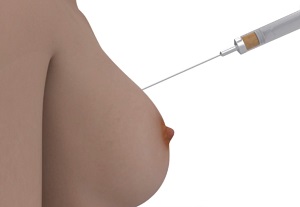
What is Lipofilling?
Lipofilling, also known as autologous fat grafting or fat transfer, is a surgical procedure in which fat cells removed from one part of your body are grafted into another area that requires increased volume. Lipofilling from a breast perspective involves transferring fat from your own body, mostly from the buttocks, abdomen, or thighs, to the breasts to enlarge or reshape the breasts by modifying the volume, shape, consistency, and profile of tissues.
Indications for Lipofilling Procedure
Lipofilling is a new breast reconstruction technique indicated for improving defects, symmetry, volume, and refinement of soft tissues after breast reconstruction/breast cancer surgery. It is also indicated for the correction of scars, whole-breast reconstruction, and other aesthetic concerns.
Preparation for Lipofilling Procedure
In general, preparation for the lipofilling procedure may involve the following:
- A thorough examination by your doctor is performed to check for any medical issues that need to be addressed prior to the procedure.
- Depending on your medical history, social history, and age, you may need to undergo tests such as blood work and a mammogram to help detect any abnormalities that could threaten the safety of the procedure.
- You will be asked if you have allergies to medications, anaesthesia, or latex.
- Inform your doctor of any medications, vitamins, or supplements that you are taking.
- Refrain from taking any anti-inflammatory drugs, aspirin, or supplements, as they may increase the chance of bleeding.
- You should not consume any solids or liquids at least 8 hours prior to surgery.
- You may be instructed to shower with an antibacterial soap the night prior to surgery.
- Refrain from smoking pre- and post-procedure for a specific period of time, as this may hamper proper healing and increase your chances of tissue necrosis and other complications.
- You will be given an opportunity to analyze before and after surgery pictures of patients who underwent breast reconstruction with lipofilling.
- A written consent will be obtained from you after the procedure has been explained in detail.
Procedure Involved in Lipofilling
The lipofilling procedure is performed under local or general anaesthesia. The donor site is first identified and marked – usually the abdomen, thighs, or buttocks – and a special needle and syringe are used to remove fat from the deeper fatty layers of the donor site. This section of the procedure is known as liposuction. The aspirated fat tissues are centrifuged to separate the fat cells from other body fluids. This processed fat is re-injected into the breast muscles and fatty layers through fine cannulas to correct contour deficits. The fat cells are injected in such a way that blood supply is easily available for their survival.
Post-Procedure Care and Recovery
Most people can go home the same day after surgery if no complications are noted. In general, postoperative care instructions and recovery may involve the following:
- You need to arrange for someone to drive you home as you will not be able to drive yourself.
- You may notice sensitivity, tenderness, swelling, and bruises over the breasts treated with lipofilling. Pain and anti-inflammatory medications are provided as needed.
- Your physician will also provide you with antibiotics to prevent the risk of infection.
- Refrain from any physical activity using your upper body or any strenuous activities for at least 4 to 6 weeks to promote healing.
- You will be able to have a shower from the first day after surgery. A waterproof dressing will protect your surgical site.
- Your doctor will provide you with instructions on diet and wound care.
- Compression garment is recommended to be worn for 2 to 3 weeks postoperatively as you heal.
- You are recommended to wear a sports bra for 4 to 8 weeks post dressing removal for additional comfort.
- You may need to take off from work for 5 to 7 days to facilitate recovery.
- You will be able to resume normal activities within a week or two, but may have certain activity restrictions.
- A periodic follow-up appointment will be scheduled to monitor your overall progress.
Benefits of Lipofilling Procedure
Some of the benefits of lipofilling procedure in breast reconstruction/breast cancer surgery include:
- Makes use of your own tissue rather than an implant
- Extraction of fat from a location you do not want it
- Breast appears as natural as an unreconstructed breast
- No visible scars
- Improved cosmetic outcome
- Improvement in self-image, self-esteem, and confidence
- Form-fitting clothes, sports bras, and swimsuits will feel and look better
Risks and Complications of Lipofilling Procedure
Lipofilling is a relatively safe procedure; however, as with any surgery, some risks and complications may occur, such as:
- Breast asymmetry
- Overcorrection or under-correction of deformity
- Irregularities
- Infection
- Bruising and swelling
- Calcifications, fat necrosis, and oil cyst formation
- Damage to underlying soft tissue structures
- Hematoma (accumulation of blood in the wound)
- Seroma (accumulation of clear fluid in the wound)
